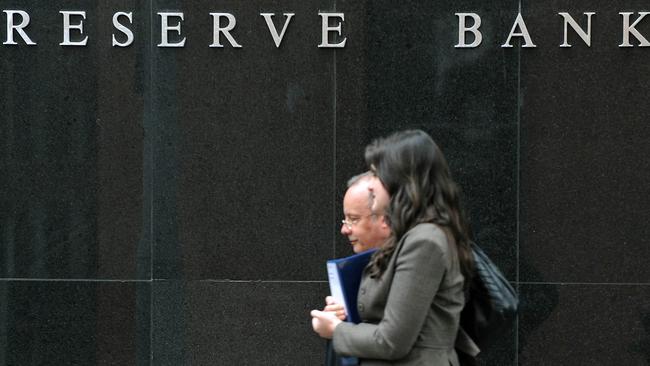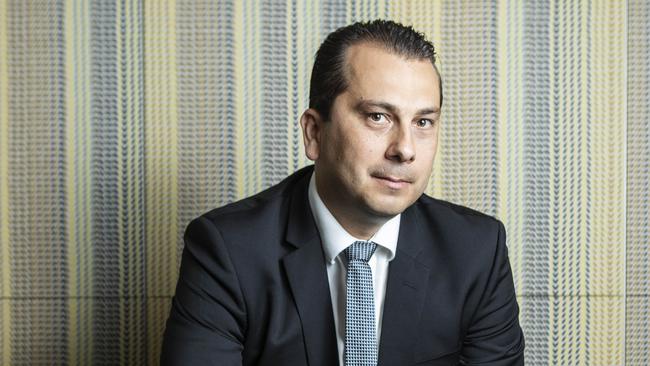Results of NAB’s business survey rekindle fears of another rate rise by the Reserve Bank
The RBA may next month consider the case for another interest rate rise on the back of NAB’s Monthly Business Survey which showed a worrying jump in labour costs and selling prices.

The Reserve Bank may consider the case for another interest rate rise at its September board meeting after NAB’s Monthly Business Survey showed a worrying jump in labour costs and selling prices following big increases in minimum and award wages that took effect last month.
Business conditions remained resilient, with demand, profitability and employment measures remaining elevated, and capacity utilisation rebounded to be well above average at 84.5 per cent, despite the fastest increase in official interest rates in over 30 years. More importantly, inflation-related measures rose strongly, “challenging expectations that the economy would continue to cool”.
Retail firms continued to report strong conditions despite the weakness in leading indicators in recent months, labour cost growth rose sharply, probably reflecting wage rises taking effect on July 1 (including minimum and award wage changes), and there was also a further rise in purchase cost growth in the month, possibly reflecting energy prices, according to NAB.
“In a sign that some of these pressures may have been immediately passed through, overall price growth also lifted, with retail price growth jumping to 2.6 per cent in quarterly terms and recreation and personal services price growth up to 2.9 per cent,” NAB chief economist Alan Oster said.
“Importantly, however, underlying respondent-level data shows the relationship between cost increases and price rises is not simple, with many firms reporting large increases in labour costs but no change in prices. Nonetheless, the survey results highlight that upside pressures to inflation remain considerable, despite the improvement seen in the June quarter CPI release.”
At the same time, the Westpac-Melbourne Institute Consumer Sentiment index remained at “deeply pessimistic” levels, losing ground this month even as the RBA left rates on hold again.
Expectations for further rate rises are low after the RBA left its cash rate target unchanged at a decade high of 4.1 per cent for a second consecutive month, even as it extended its time frame for returning inflation to its 2-3 per cent target band to over four years.
After expectations of more rate rises were dialled back in the wake of the August board meeting, market pricing implies that the cash rate target will peak at about 4.2 per cent in December before falling to about 3.9 per cent by December 2025.
Economists say the RBA’s “reaction function” has changed to one that tolerates a slower return of inflation to its target band. Inflation expectations are expected to remain consistent with the inflation target, even as the nation’s unemployment rate isn’t expected to rise above 4.5 per cent, a level that incoming governor Michele Bullock has described as “not far off some estimates of where the NAIRU (non-accelerating inflation rate of unemployment) might currently be”.
But as the RBA board noted at its last meeting, “tightening policy further could provide some further insurance against these upside risks to inflation”. The risks include excessive demand in parts of the economy, a tight jobs market, weak productivity growth that is contributing to strong growth in labour costs, strong services inflation and the fact that it has been “stickier” than expected in other countries with higher policy rates.

In its quarterly statement on monetary policy, the RBA said these factors “highlight the risk that inflation could be above the target range for an even longer period than currently forecast, which would increase the probability of higher inflation expectations becoming embedded”.
The September board meeting will be the last for current RBA governor Philip Lowe.
UBS Australia chief economist George Tharenou said NAB’s monthly business survey showed a “worrying spike” in labour costs and selling prices, which “materially raises the risk” of another rate increase.
“A concern for the RBA is labour costs, which already surged in June on news of the minimum wage decision on June 2,” Mr Tharenou said. “In July, labour costs lifted even further to imply a wages bill of about 15 per cent annualised, up from a prior trend of about 9 per cent.
“Furthermore, selling prices also almost doubled, to be consistent with annualised inflation of about 8 per cent year-on-year; which is now well above the monthly inflation indicator in June 2023 which slowed sharply to 5.4 per cent year-on-year.”
Meanwhile, employment intentions in the survey remain historically consistent with positive employment growth of about 2 per cent year-on-year, equivalent to about 23,000 jobs a month.
While expecting the RBA to keep rates on hold at 4.1 per cent, Mr Tharenou said he saw a “material risk” of another 25-basis-point increase following the release of the business survey.
“On the hawkish side, the RBA’s August SoMP forecasts for headline CPI for the 2024 fourth quarter and 2025 second quarter were revised up a tick, to remain above their 2-3 per cent target band for even longer,” he said.
And the “stagflation mix” of weak business confidence and stronger inflation measures in the July business survey was “very worrying, and is coupled by booming house price expectations”.
“However, the RBA should have known the minimum wage impact was coming, and this reaction was a risk when they chose not to hike in July and August,” Mr Tharenou said.




To join the conversation, please log in. Don't have an account? Register
Join the conversation, you are commenting as Logout